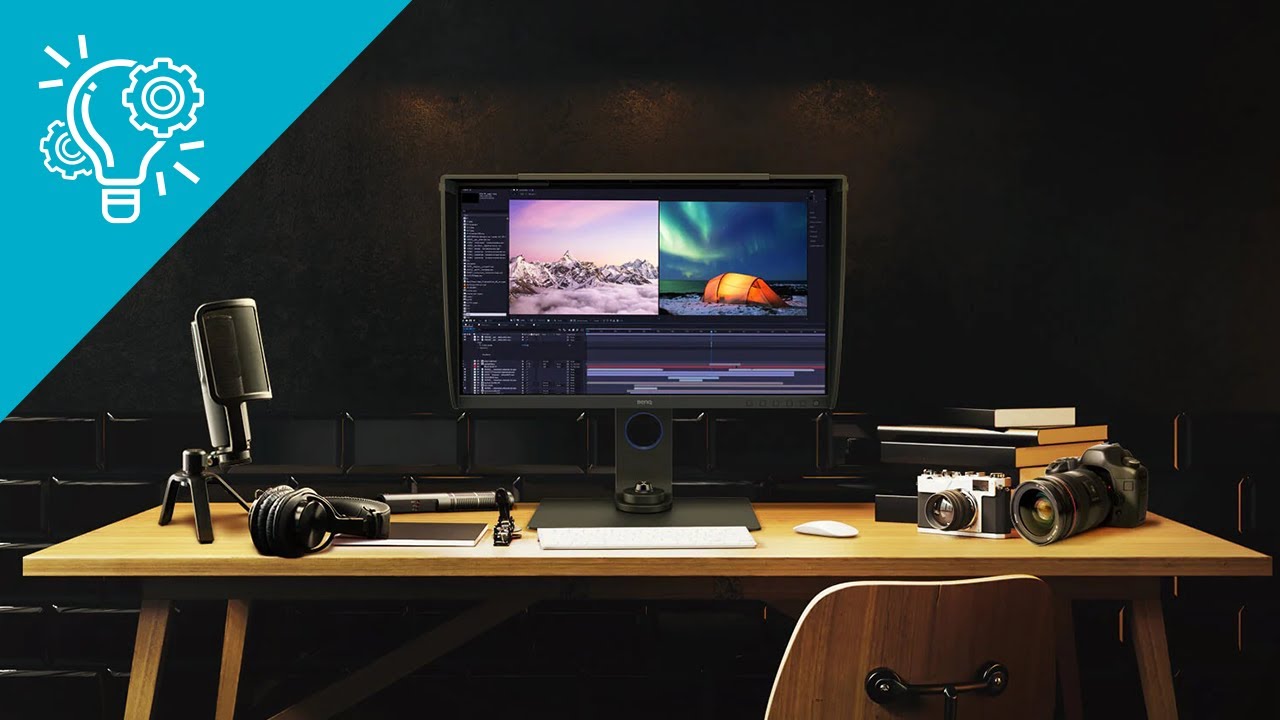In the realm of online video editing, selecting the optimal monitor becomes paramount for realizing creative visions with precision and clarity. Whether you’re fine-tuning colors, adjusting compositions, or perfecting transitions, having the best monitor for video editing can elevate your craft to new heights. In this comprehensive guide, we delve into the essential features and considerations to help you navigate the myriad options available, ensuring that you can edit video online confidently.
Display Specifications for Video Editing
When it comes to the display specifications for video editing, there are a few key aspects to consider. Firstly, resolution and pixel density play a crucial role in determining the level of detail and clarity you can achieve in your editing work. Higher resolutions, such as 4K or even 8K, offer greater pixel density, resulting in sharper images and more precise editing capabilities.
Secondly, color accuracy and gamut coverage are essential for ensuring that the colors you see on your monitor accurately represent the colors in your video footage. A monitor with a wide color gamut, such as those with support for Adobe RGB or DCI-P3 color spaces, can reproduce a broader range of colors, allowing for more accurate color grading and correction.
Overall, when selecting a monitor for video editing, paying close attention to its display specifications can make a significant difference in the quality and precision of your editing work. High resolution, pixel density, color accuracy, and gamut coverage are all critical factors to consider to ensure that your monitor meets the demanding requirements of professional video editing.
Size and Aspect Ratio
To better understand the importance of size and aspect ratio in video editing monitors, let’s break it down:
| Monitor Size | Aspect Ratio | Ideal Use Cases |
| 24 inches | 16:9 | Entry-level editing tasks |
| 27 inches | 16:9 | General-purpose editing |
| 32 inches | 16:9 | Multitasking and detail work |
When it comes to video editing, the size of your monitor can significantly impact your workflow and overall editing experience. Larger monitors provide more screen real estate, allowing for better multitasking and more detailed editing work. However, it’s essential to consider your workspace and viewing distance when choosing the right size monitor for your needs.
Aspect ratio is another crucial factor to consider. Most video editing is done in the standard 16:9 aspect ratio, which is ideal for viewing content on widescreen displays and is commonly used in film and television production. However, some editors may prefer ultrawide monitors with a 21:9 aspect ratio for a more immersive editing experience and increased horizontal workspace.
Connectivity Options
Connectivity options are crucial considerations when choosing a monitor for video editing, as they determine how well the monitor integrates with your editing setup and peripherals. Here are some key connectivity options to look for:
- HDMI: HDMI ports are essential for connecting your monitor to various devices such as computers, laptops, cameras, and gaming consoles. Ensure that the monitor has multiple HDMI ports to accommodate all your devices simultaneously.
- DisplayPort: DisplayPort is another versatile option for connecting your monitor to high-resolution devices, offering higher bandwidth and better performance compared to HDMI. Look for monitors with DisplayPort inputs for enhanced connectivity options.
- USB-C: USB-C ports are becoming increasingly popular due to their versatility and ability to transmit both power and data. Monitors with USB-C connectivity allow for single-cable connection to compatible laptops and devices, simplifying your setup and reducing cable clutter.
- USB Hub: A built-in USB hub in the monitor allows you to connect multiple USB devices such as keyboards, mice, external hard drives, and USB flash drives directly to the monitor. This feature can be particularly useful for expanding your connectivity options and keeping your workspace organized.
- Audio Output: Some monitors come with built-in speakers or audio output ports, allowing you to connect headphones or external speakers directly to the monitor for audio playback. This can be convenient for editing tasks that require sound monitoring or playback.
When selecting a monitor for video editing, carefully consider the connectivity options that best suit your workflow and connectivity needs. Whether you require multiple HDMI ports for connecting various devices or USB-C connectivity for streamlined cable management, choosing a monitor with the right connectivity options can enhance your editing experience and productivity.
Ergonomics and Adjustability
Ergonomics and adjustability are essential aspects to consider when choosing a monitor for video editing, especially if you spend long hours in front of the screen. Here’s why they matter:
- Adjustable Stand: Look for monitors with stands that offer a wide range of adjustability options, including height adjustment, tilt, swivel, and pivot. Being able to customize the position and angle of your monitor ensures optimal viewing comfort and reduces strain on your neck, shoulders, and eyes.
- VESA Mount Compatibility: If the included stand doesn’t meet your ergonomic needs, consider monitors that are compatible with VESA mounts. This allows you to mount the monitor on an adjustable arm or wall mount, giving you even more flexibility in positioning and optimizing your workspace layout.
- Eye Comfort Features: Many monitors come with eye comfort features such as blue light filters and flicker-free technology, which help reduce eye strain and fatigue during long editing sessions. These features can be particularly beneficial if you tend to work late into the night or in low-light environments.
- Anti-Glare Coating: Monitors with anti-glare coatings minimize reflections and glare from ambient lighting, ensuring better visibility and reducing eye strain. This is especially important if you work in a brightly lit environment or near windows where glare can be a problem.
By prioritizing ergonomics and adjustability when selecting a monitor for video editing, you can create a comfortable and efficient workspace that promotes productivity and minimizes the risk of discomfort or injury associated with prolonged screen time. Investing in a monitor with ergonomic features is an investment in your health and well-being as an editor.
Budget-Friendly Options
When searching for a budget-friendly monitor for video editing, there are two main approaches you can take:
Entry-Level Monitors
These monitors offer basic features and functionality at an affordable price point, making them ideal for beginners or those with limited budgets. Key considerations when choosing an entry-level monitor include:
- Resolution: Look for monitors with at least Full HD (1920×1080) resolution, which provides decent clarity and detail for basic editing tasks without breaking the bank.
- Color Accuracy: While entry-level monitors may not offer the same level of color accuracy as high-end models, prioritize monitors with decent color reproduction to ensure your edits are as accurate as possible.
- Screen Size: Opt for a screen size that suits your workspace and editing needs. Smaller monitors (e.g., 24 inches) are generally more affordable but may offer limited screen real estate for multitasking.
Refurbished or Older Models
Another cost-effective option is to consider refurbished monitors or older models that may be available at discounted prices. Many manufacturers offer refurbished units that have been tested and certified to meet quality standards, providing a more affordable alternative to brand-new monitors. Additionally, older models may still offer adequate performance for basic editing tasks and can be a budget-friendly option for those willing to compromise on the latest features and specifications.
By exploring these budget-friendly options, you can find a video editing monitor that meets your needs and budget constraints without sacrificing too much on quality or performance. Remember to prioritize essential features such as resolution, color accuracy, and screen size, and consider factors like warranty coverage and customer support when making your decision.

